
Stained glass is a grand masterpiece of monumental art made from small pieces of colored glass
Stained glass is a work of monumental art in the form of a transparent composition made of pieces of colored glass installed in a window opening. Stained glass represents an important decorative component of architectural structures and is often used to adorn churches.
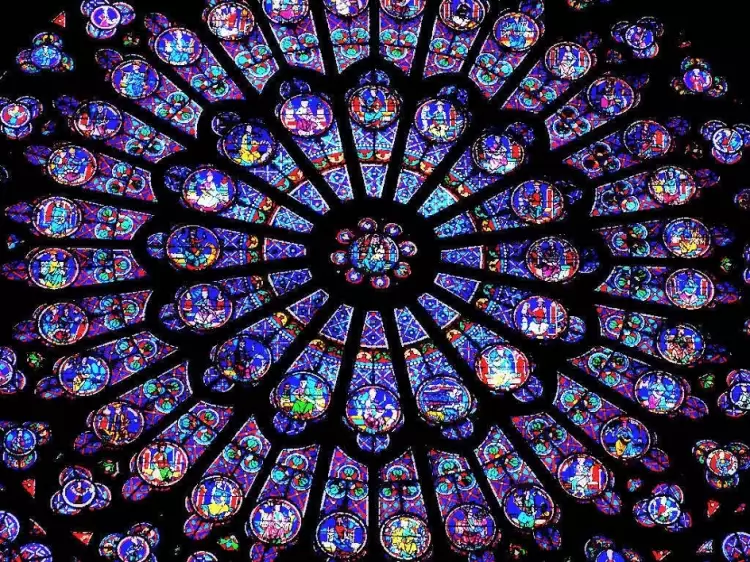 Stained glass. Stained glass window of the Notre Dame de Paris, 12th century
Stained glass. Stained glass window of the Notre Dame de Paris, 12th century
Unlike regular windows, stained glass not only allows light to pass through but also tints it in various shades. The bright and colorful image created from colored glass pieces under natural light creates a special atmosphere inside the building, emphasizes the beauty of the interior, and has a strong emotional impact on individuals.
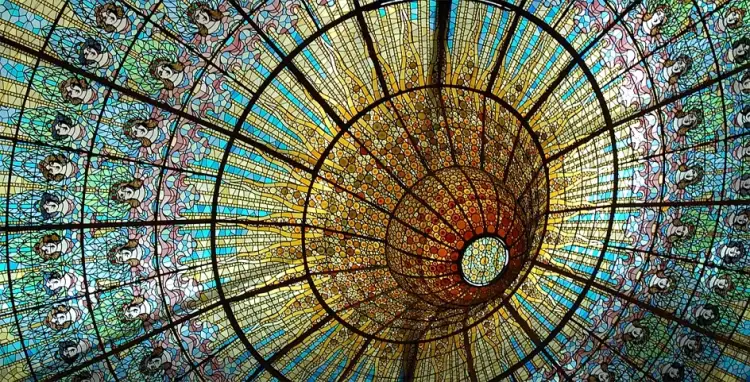 Stained glass. Stained glass window of the Palace of Catalan Music, 1908
Stained glass. Stained glass window of the Palace of Catalan Music, 1908
Types of Stained Glass
Stained glass can vary based on several criteria, including purpose and external appearance features. However, the most detailed and common classification is based on the technique of execution and includes the following types:
- Classic or Leaded. A set of colored glass elements and a profile for joining the fragments are made based on a pre-made template. Each glass piece is framed with a thin strip of colored metal and soldered to the adjacent one according to the template. Traditional techniques use lead for profile making, and the Tiffany method uses thin copper strips.
- Painted. An artist-stained glass painter creates an image on the glass surface using colored water-soluble paints. The composition is then covered with a protective layer and fired in a high-temperature oven.
- Sandblasted. The glass sheet is treated with abrasive materials, often fine sand particles under high pressure. As a result, the smooth transparent glass surface becomes frosted.
- Fused (Fusing). This technique does not use a metal profile. Ornament or a plot is made from glass pieces, which are then fused in a kiln. Adjacent glass elements fuse together to form a unified composition.
- Etched. In this technique, the glass blank is treated with specific aggressive substances. As a result of a chemical reaction, the upper layer of glass dissolves, and the surface of the sheet in treated areas becomes frosted.
- Cast. Characterized by high labor intensity. Each glass module is cast or blown separately, and then a stained glass is assembled from a set of elements. Glass parts are connected with reinforcement or construction cement.
- Faceted. In essence, it is very similar to the classic stained glass making method. The difference lies in beveling each glass piece before installation, and the composition is assembled from faceted elements.
- Combined. It is a combination of two or more of the aforementioned stained glass techniques.
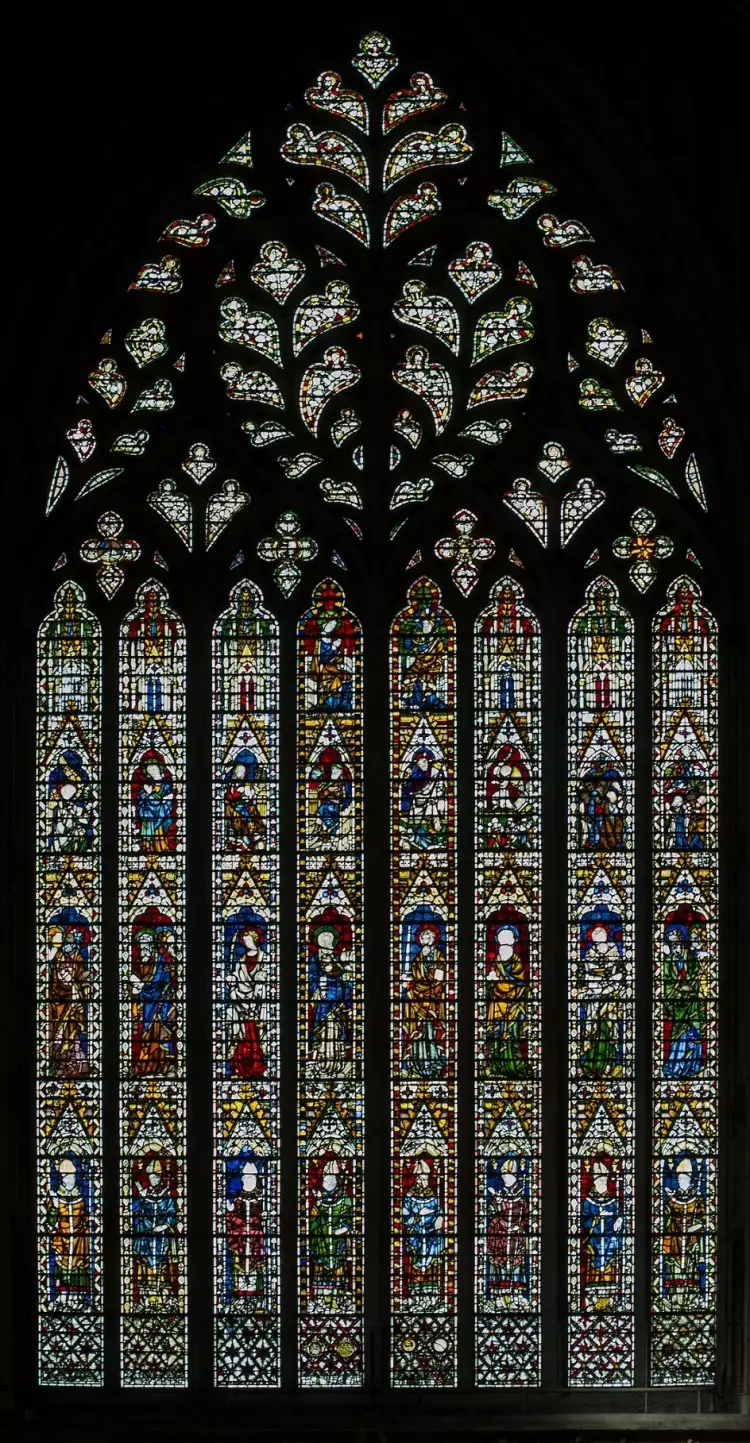 Stained glass. Stained glass window of York Gothic Cathedral, 13th century
Stained glass. Stained glass window of York Gothic Cathedral, 13th century
For the decorative design of the interior of buildings and spaces, various techniques for simulating stained glass are also used. Among them, the most common ones are:
- Faux-Leaded. An artist applies a drawing and then a contour imitating the profile to the glass using colored paints.
- Film. Colorful polymer film and thin strips of metallic tape are carefully applied to a glass sheet to create the composition.
- Applied. Unlike the previous technique, thicker materials are used instead of polymer film (usually glass plates).
- Photo Printing. Images are applied to glass surfaces using modern printing equipment.
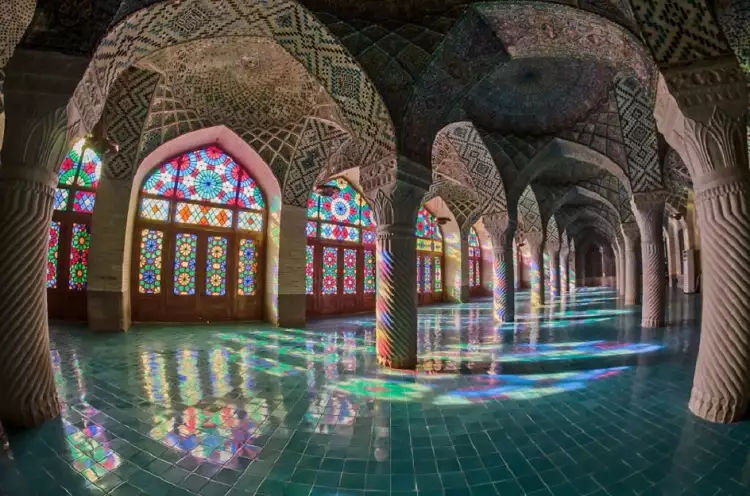 Stained glass. Stained glass of the Nasir al-Munk Mosque, 19th century
Stained glass. Stained glass of the Nasir al-Munk Mosque, 19th century
Stained glass can also be divided into three main groups based on the type of image:
- Narrative.
- Ornamental.
- Combined.
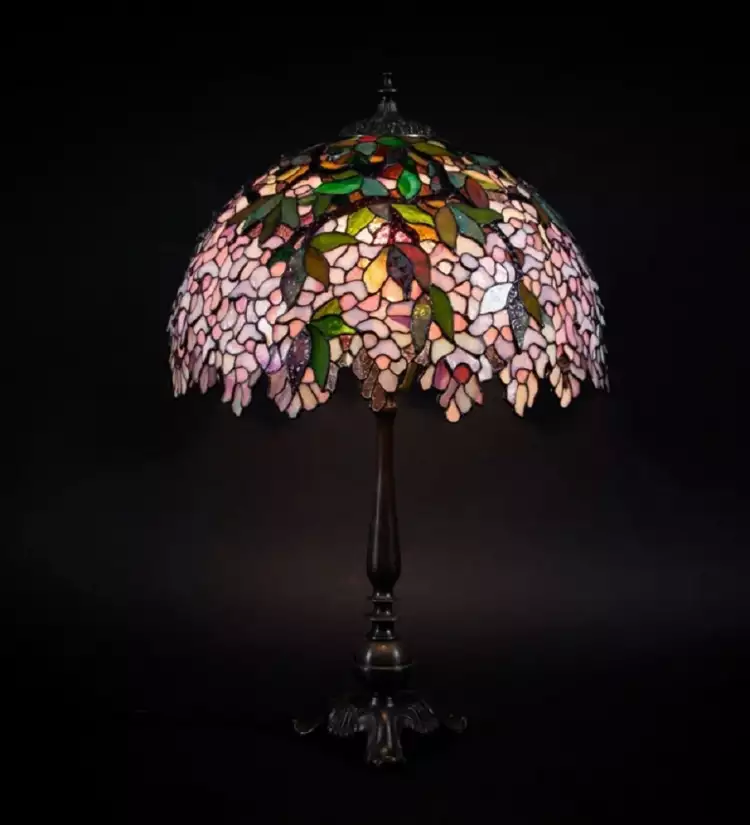 Stained glass. Tiffany Lamp, 20th century
Stained glass. Tiffany Lamp, 20th century
The History of Stained Glass
According to most scholars, the history of stained glass spans over 2,000 years. The oldest examples of this art date back to the ancient era. Small window openings in the homes of wealthy residents of Rome were adorned with mosaics made from colored glass. Historical documents that have survived to this day indicate that multicolored stained glass was installed in the windows of the Hagia Sophia Cathedral in Constantinople as early as 330 AD.
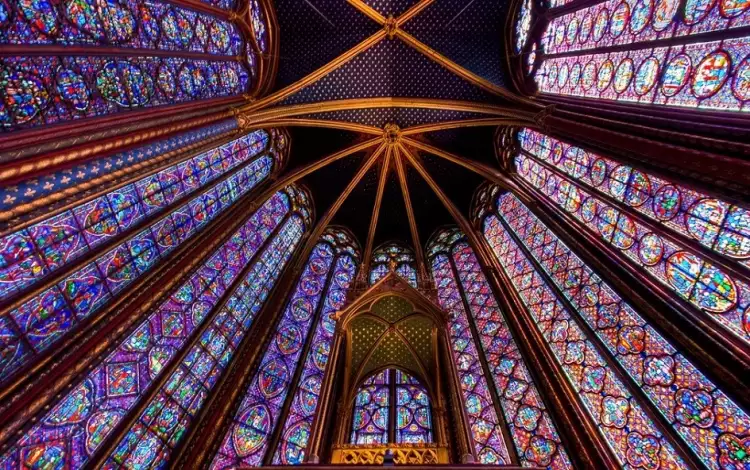 Stained glass. Stained glass window of St Chapel Cathedral, 13th century
Stained glass. Stained glass window of St Chapel Cathedral, 13th century
In the 4th and 5th centuries, when early Christian churches were being built in Western Europe, the practice of filling window openings with thin, translucent alabaster plates with wooden profiles—a primitive imitation of stained glass—was common. However, colored glass and lead profiles began to be used for this purpose in the 6th century, as mentioned in many medieval chronicles.
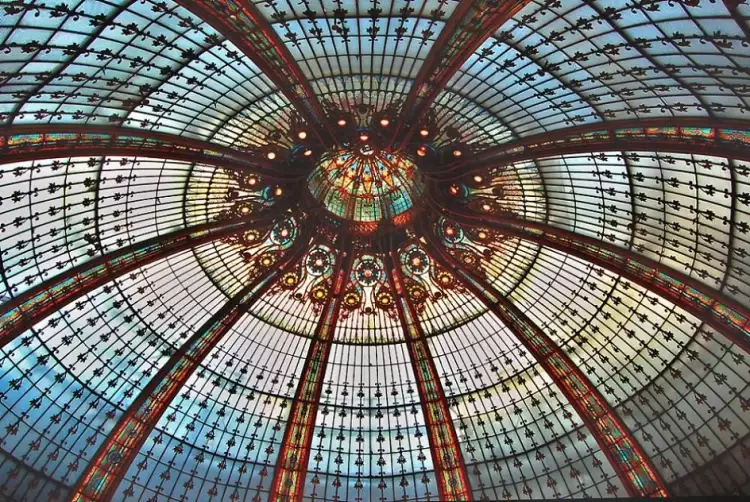 Stained glass. Galeries Lafayette Paris Haussmann, 1912
Stained glass. Galeries Lafayette Paris Haussmann, 1912
The stained glass windows of Augsburg Cathedral, dating back to 1065, are considered the oldest surviving works of this art form. They feature transparent glass colored with various paints.
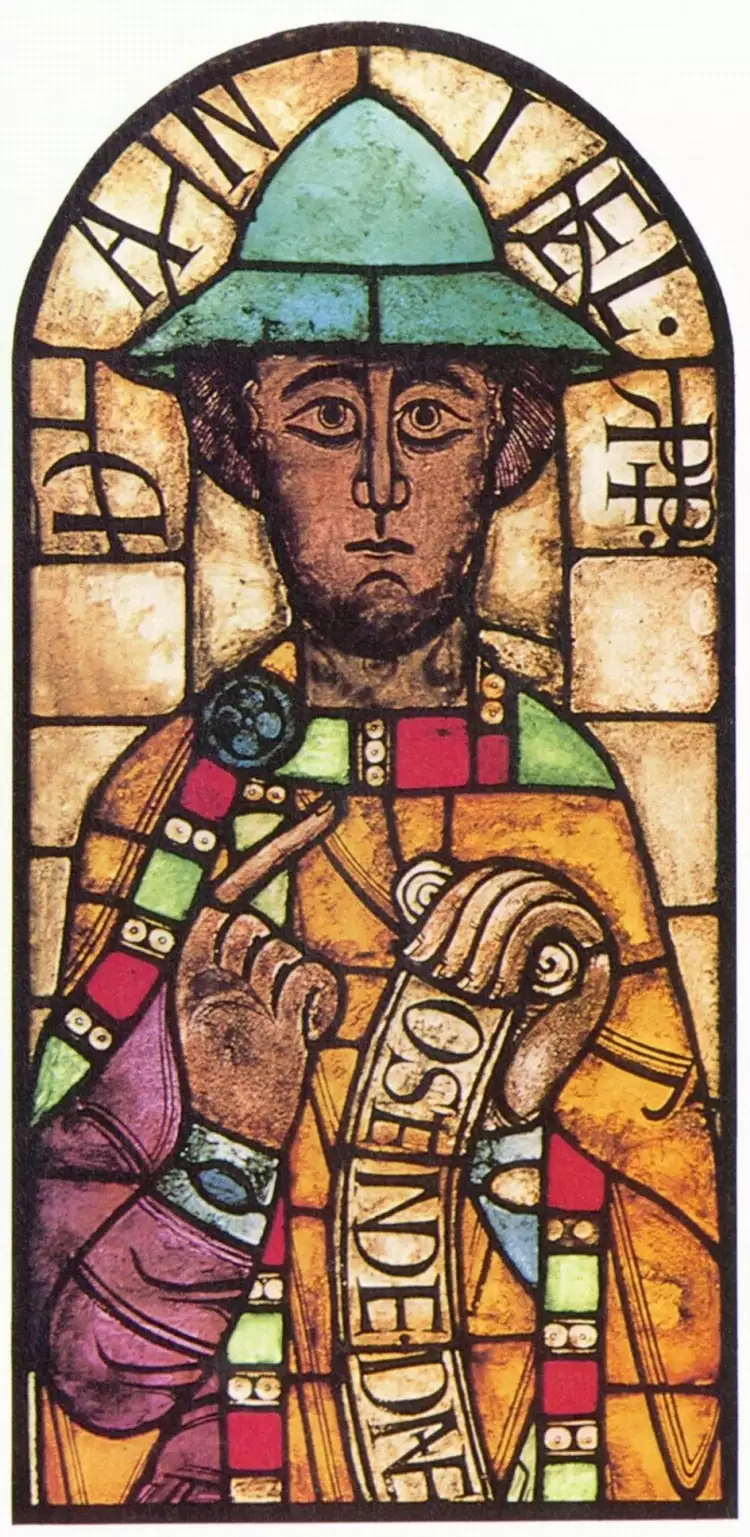 Stained glass. Stained glass window Prophet Daniel from Augsburg Cathedral, 1065
Stained glass. Stained glass window Prophet Daniel from Augsburg Cathedral, 1065
During the Middle Ages, European architecture depicted figures of saints and even entire stories from the Bible on stained glass panels. At the same time, ornamental stained glass windows became widely popular in mosques in the Islamic world.
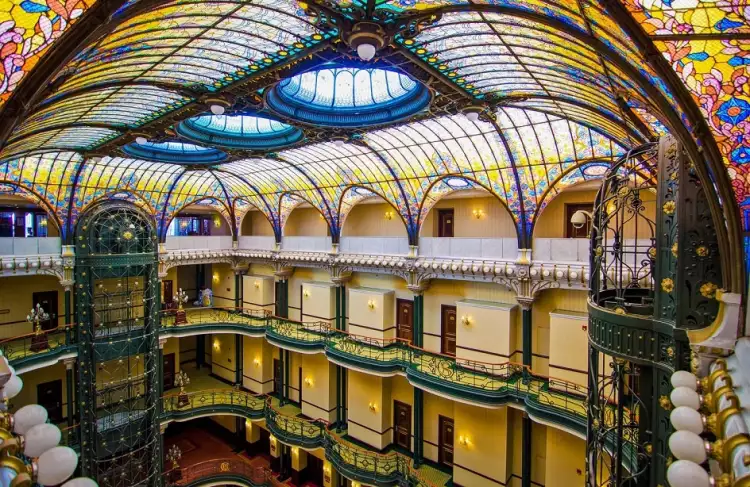 Stained glass. Interior of the Gran Hotel Ciudad de Mexico, 1968
Stained glass. Interior of the Gran Hotel Ciudad de Mexico, 1968
During the Renaissance, significant changes occurred in the art of stained glass. Artists began using glass windows as a canvas for painting using tempera and later oil paints.
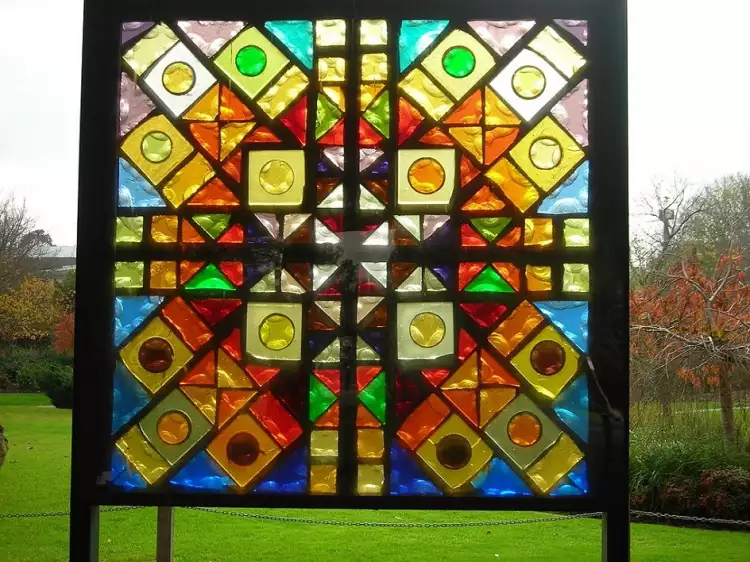 Stained glass. The Four Seasons in the Melbourne Sculpture Park, 1978
Stained glass. The Four Seasons in the Melbourne Sculpture Park, 1978
In the period of the Reformation in Western Europe, there was mass destruction of churches during religious wars. A vast number of ancient stained glass windows were shattered, replaced with plain, transparent glass. Gradually, ancient stained glass techniques were lost until the end of the 19th century.
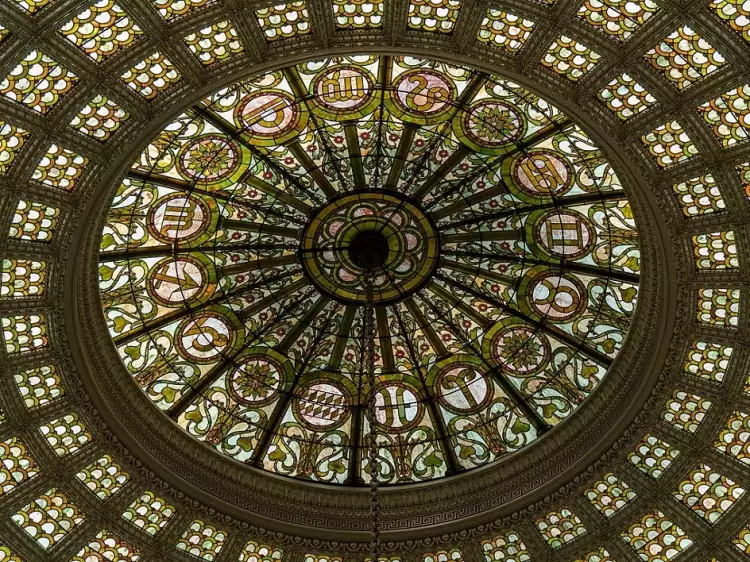 Stained glass. Dome of the Chicago Cultural Centre, 1897
Stained glass. Dome of the Chicago Cultural Centre, 1897
A revival of interest in stained glass occurred thanks to the ingenious American artist Louis Comfort Tiffany. The son of the world-famous founder of the jewelry company Tiffany & Co became enamored with creating decorative glass art objects from the early 1880s.
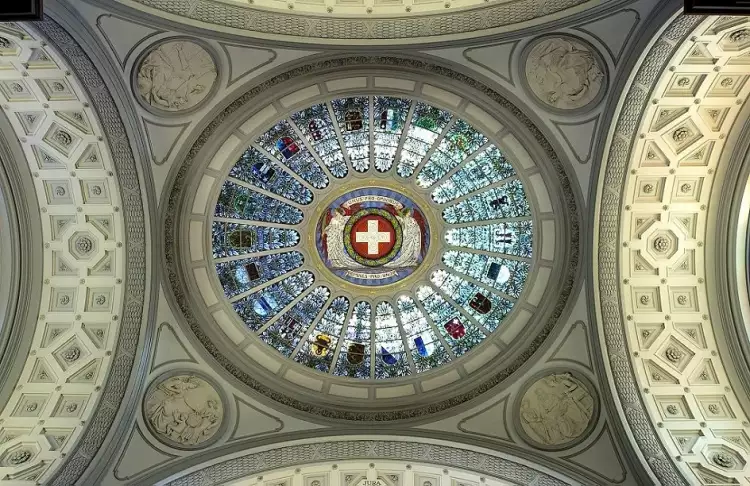 Stained glass. Dome of the Swiss Federal Palace, 1902
Stained glass. Dome of the Swiss Federal Palace, 1902
Louis invented his own stained glass technique, which proved to be highly successful. Instead of lead strips as a profile for joining glass elements, he began using thin copper strips, which he adhered with wax and soldered with lead.
This new technology allowed for the creation of not only stained glass but also magnificent three-dimensional compositions from colored glass. Exquisite lamps with glass shades became highly sought after by affluent individuals.
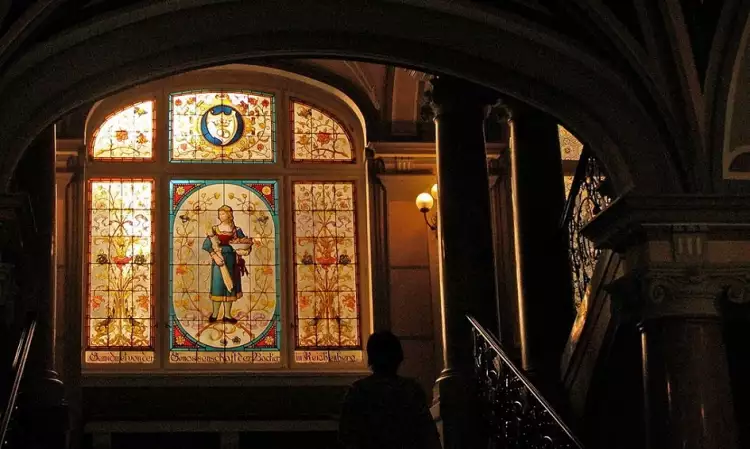 Stained glass. Window in the Liberec City Hall, 15th century
Stained glass. Window in the Liberec City Hall, 15th century
From the early 20th century to the present day, old stained glass techniques have continually been perfected, and alternative stained glass techniques have emerged. Bright and colorful compositions made from mosaic glass are increasingly used not only for decorating churches but also in the construction of public and commercial buildings.
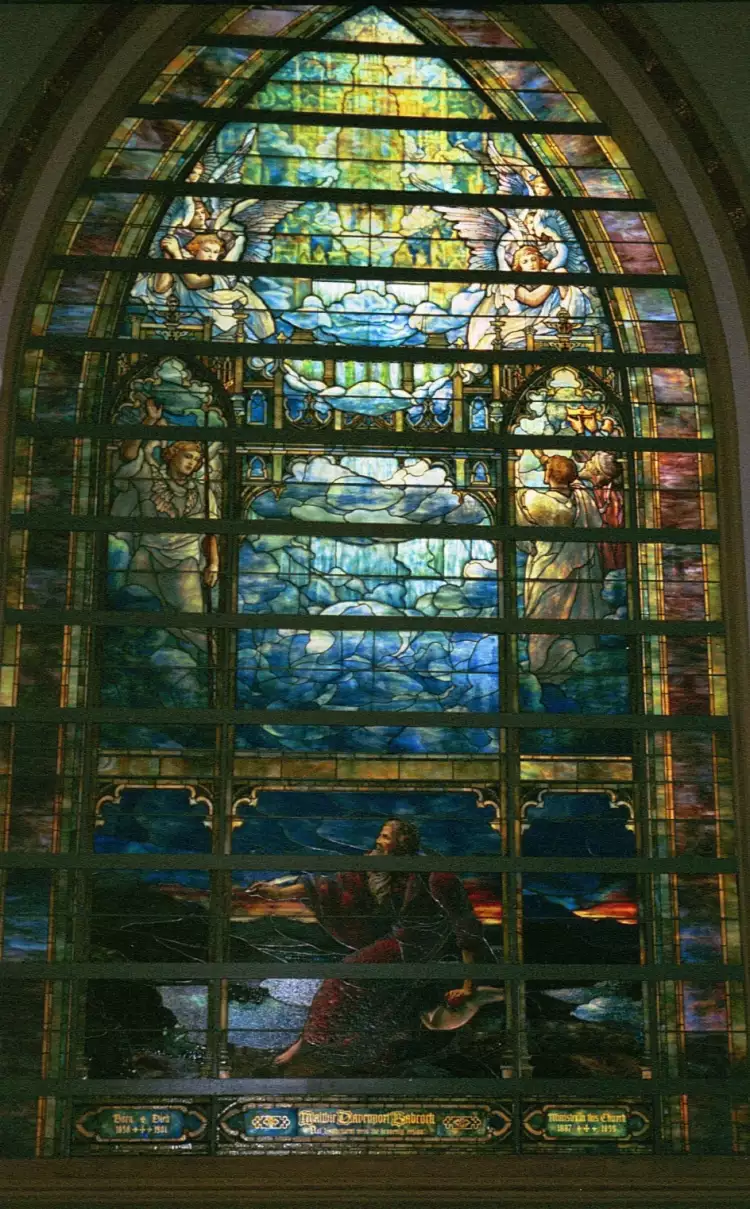 Stained glass. Brown Memorial Presbyterian Church in Baltimore, 20th century
Stained glass. Brown Memorial Presbyterian Church in Baltimore, 20th century
The Most Famous Stained Glass Windows in the World
Among the most famous stained glass windows in the world, you can find dozens of outstanding works of monumental art from different eras. However, it's worth highlighting masterful stained glass compositions in the following buildings of various purposes:
- Aachen Cathedral (Germany) - 8th century.
- Gothic Sainte-Chapelle Cathedral (Paris, France) - 13th century.
- Nasir al-Mulk Mosque (Shiraz, Iran) - 19th century.
- Galeries Lafayette (Paris, France) - 1912.
- Gran Hotel Ciudad de Mexico (Mexico) - 1968.
- York Minster Gothic Cathedral (United Kingdom) - 13th century.
- Palau de la Música Catalana (Barcelona, Spain) - 1908.
- Chicago Cultural Center (USA) - 1897.
- Notre-Dame Cathedral (Paris, France) - 12th century.
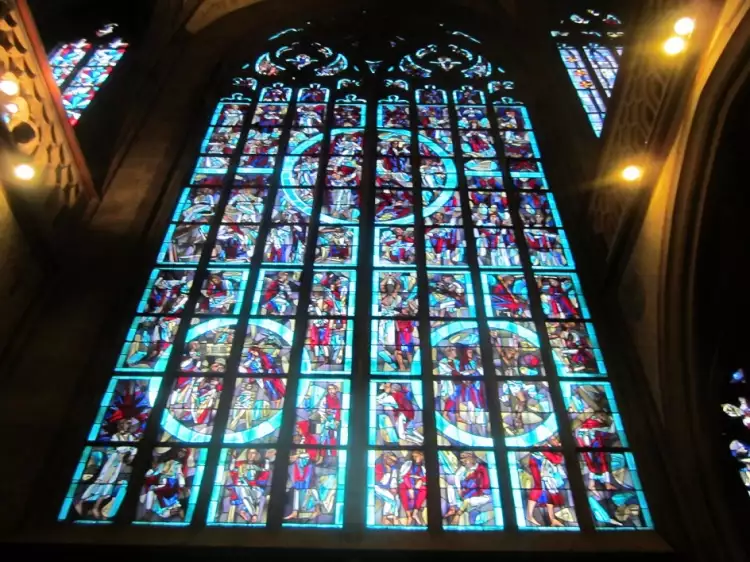 Stained glass. Stained glass window of Aachen Cathedral, 8th century
Stained glass. Stained glass window of Aachen Cathedral, 8th century
Unique antique items and works of art can be acquired by visitors to the Very Important Lot portal at online art auctions. Our website also offers a unique opportunity for anyone interested in purchasing paintings, icons, and glassware at affordable prices from modern artists.
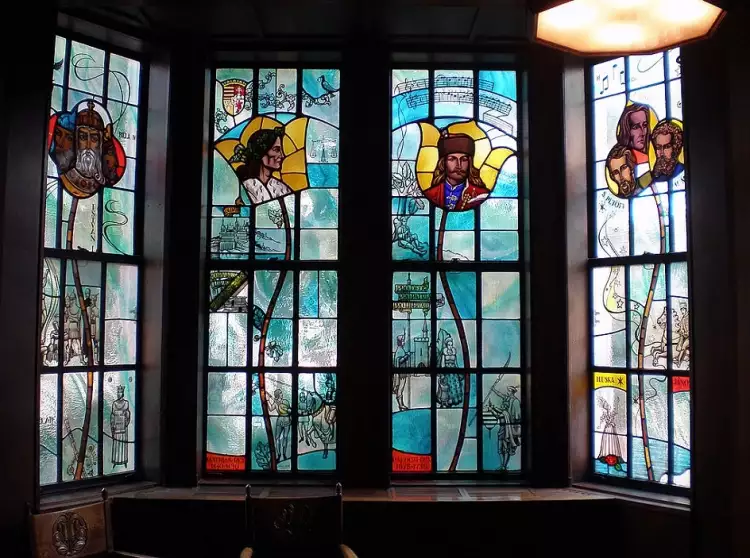
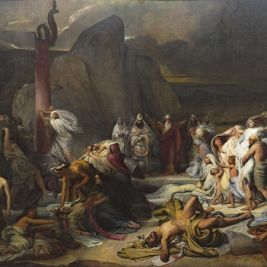 The painting "The Bronze Serpent" by Fyodor Bruni is an interpretation of an Old Testament story by a great master
The painting "The Bronze Serpent" by Fyodor Bruni is an interpretation of an Old Testament story by a great master  Caravaggio was a brilliant painter, an art innovator, and a thorough rebel
Caravaggio was a brilliant painter, an art innovator, and a thorough rebel  Animalism is a popular genre in painting from prehistoric times
Animalism is a popular genre in painting from prehistoric times  Engraving is a captivating art of creating printed images
Engraving is a captivating art of creating printed images 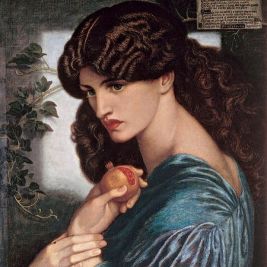 Pre-Raphaelites - the romantics of Victorian England
Pre-Raphaelites - the romantics of Victorian England 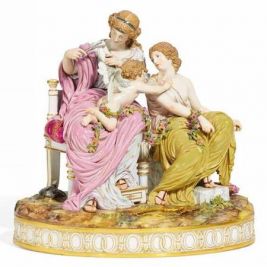 Meissen Porcelain: The History of the Manufactory
Meissen Porcelain: The History of the Manufactory 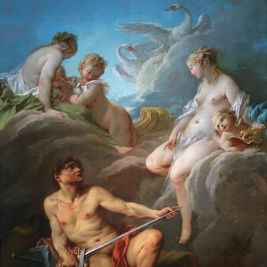 Mythological genre is the captivating world of ancient myths and legends
Mythological genre is the captivating world of ancient myths and legends 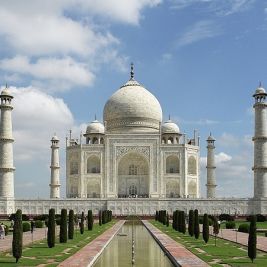 Architecture is an ancient art of creating magnificent monumental masterpieces
Architecture is an ancient art of creating magnificent monumental masterpieces 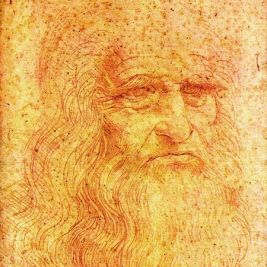 Drawing: essence, types, techniques, and a brief history
Drawing: essence, types, techniques, and a brief history 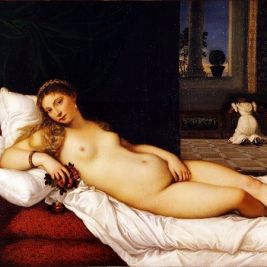 Genre of Nude in Painting: Evolution and Historical Trends of the Nude Style
Genre of Nude in Painting: Evolution and Historical Trends of the Nude Style